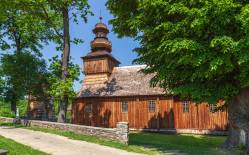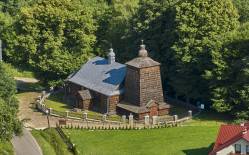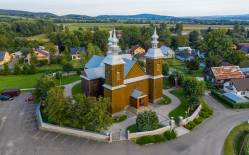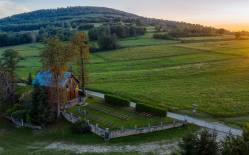Trześniów, which was a royal village, remained until the partitions as a pledge with the local nobility. In 1772 it was handed over to count Ignacy Cetner. At the beginning of the 19th century, the estate belonged to Rafał Kołłątaj, Hugo's brother. Then, in the place of the older seat, a manor house that still exists today was built. Rafał's daughter, Maria, donated the property to the Blind Factory in Lviv, which leased the property. The last lessee was Feliks Sokulski. After World War II, the facilities were taken over by the State Farm. Today the manor complex is privately owned.
The manor house was renovated after a fire in 1996, with some minor modernizations. The building has retained its original shape. The complex also includes a granary from the beginning of the 19th century and the remains of a landscape park also from that period, with a few specimens of old trees. The remains of the pond system have been preserved.
The manor house is built on a rectangular plan and is covered with a hipped roof. Next to it, there are two built-up porches with roofs. The manor house has a log structure, one-story, on a stone foundation. The roof with a wide eaves supported on the last of the ceiling porters is covered with shingles, the façades are decorated with boards in the so-called ichthyosis. The two-bay enfilade interior has been partially rebuilt.
Photo: Karolina Kiwior
Gallery

Recommended venues on the Trail



This website has been modernized with the financial support of the European Union under the Cross-Border Cooperation Programme Poland-Belarus-Ukraine 2014-2020. The responsibility for its content lies solely with the Podkarpackie Regional Tourism Board and cannot, in any case, be treated as a reflection of the position of the European Union, the Managing Authority, or the Joint Technical Secretariat of the Cross-Border Cooperation Programme Poland-Belarus-Ukraine 2014-2020.













